By Thomas Choinacky
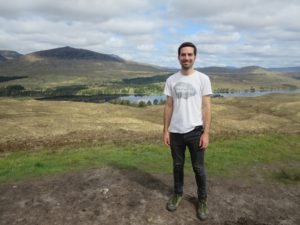 I just got back from a hiking trip of Scotland’s West Highland Way. The walk is 96 miles, which I completed in 7 days. It was a gorgeous experience to free the mind into the hills of the Highlands and push my body in new ways as I seeped into nature.
I just got back from a hiking trip of Scotland’s West Highland Way. The walk is 96 miles, which I completed in 7 days. It was a gorgeous experience to free the mind into the hills of the Highlands and push my body in new ways as I seeped into nature.
The West Highland Way starts in Milngavie (just outside of Glasgow), and traditionally is hiked south to north, to Fort William. The path started to be used in the 15th century by drovers and then became popularized by military use in the 18th century. In the past 20 to 30 years it has become a common tourist trip.
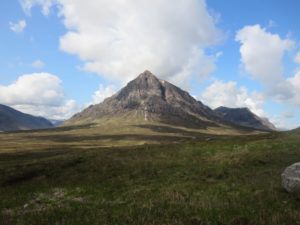 It is a challenging walk, my daily, full Scottish breakfast: sausage, bacon, fried egg, beans, tomato, black pudding, scone at each B&B were required protein for the adventure. The first days along the northern edge of the Scottish Lowlands I literally walked through sheep grazing fields. Quite a shift from Philadelphia. The Highlands are full of ups and downs as I hiked along and among moors, lochs, and over hills and crags. Each ben (Scottish for hill/ mountain) offered its own character as each day they transitioned from yellow and green to the steeper stony peaks.
It is a challenging walk, my daily, full Scottish breakfast: sausage, bacon, fried egg, beans, tomato, black pudding, scone at each B&B were required protein for the adventure. The first days along the northern edge of the Scottish Lowlands I literally walked through sheep grazing fields. Quite a shift from Philadelphia. The Highlands are full of ups and downs as I hiked along and among moors, lochs, and over hills and crags. Each ben (Scottish for hill/ mountain) offered its own character as each day they transitioned from yellow and green to the steeper stony peaks.
I imagined what the walk was like generations ago (without weatherproof hiking boots!) and accepting wet feet throughout the nearly daily journey through the moors. I was lucky to have only one day that it poured. Even in hiking boots to say my feet hurt at the end of each day was an understatement.
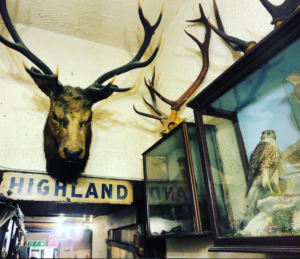 The daily wandering gave me space to think about our company’s new project FEED too. I contemplated the different people (and animals) who made this journey: from navvies seeking work in Kinlochleven, (The Electric Village- an aluminum smelter village that was the first village in the world to have every house with electricity) to the Jacobite army heading to battle and ultimate massacre in Glen Coe.
The daily wandering gave me space to think about our company’s new project FEED too. I contemplated the different people (and animals) who made this journey: from navvies seeking work in Kinlochleven, (The Electric Village- an aluminum smelter village that was the first village in the world to have every house with electricity) to the Jacobite army heading to battle and ultimate massacre in Glen Coe.
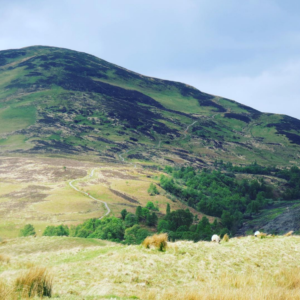 Most days I passed remains of stone buildings that were only lived in century/ies ago. I can only imagine how many years it took to just build these structures, as hands slowly collected and piled these stones(especially in the often dreary, rainy weather of the region), to become a home and shelter. These ruins were reminders of the remoteness to the lives that many individuals accepted in these hills. Also, the limited food supply that was available to the region. I compared this to our current culture of access. It’s now hard to imagine a time where things aren’t a click away.
Most days I passed remains of stone buildings that were only lived in century/ies ago. I can only imagine how many years it took to just build these structures, as hands slowly collected and piled these stones(especially in the often dreary, rainy weather of the region), to become a home and shelter. These ruins were reminders of the remoteness to the lives that many individuals accepted in these hills. Also, the limited food supply that was available to the region. I compared this to our current culture of access. It’s now hard to imagine a time where things aren’t a click away.
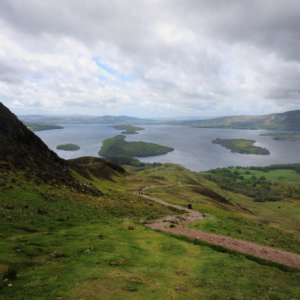 I was also lucky to have my baggage transferred each day. All I needed to pack each day was rain gear, lunch, snacks, and water. Then when I arrived at my B&B I could shower and change into fresh clothes that I didn’t have to carry each day! All benefits to our contemporary culture.
I was also lucky to have my baggage transferred each day. All I needed to pack each day was rain gear, lunch, snacks, and water. Then when I arrived at my B&B I could shower and change into fresh clothes that I didn’t have to carry each day! All benefits to our contemporary culture.
